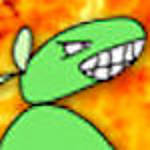That is a neat photo. The Pz IV in question was fitted with applique armor to the hull front and driver's plate (you can see the bolt holes in the exposed plate) so I'd say your assumption is right about the exposed primer on the front plate being the result of the 2nd plate having gone missing. That would also match to when it would've been produced (1943 for that Ausf) and parts delivered in primer but then basecoated in Dunkelgelb...one would assume that the Dunkelgelb would've been applied after the applique plates had been added.
The primer on the sprockets and final drive housings presents a fascinating example...kind of like this photo of a PzBefWg III making a river crossing and sporting a replacement wheel in red primer on both the inner and outer hubs. Photos are from Trojca's Sdkfz Pz.kpfw. III and are for discussion purposes only.


I would think it plausible that replacement parts could've been supplied in red oxide primer as a normal course right up until Dec 1944 when the order changed for them to be supplied in Olivegrun from the suppliers?














































